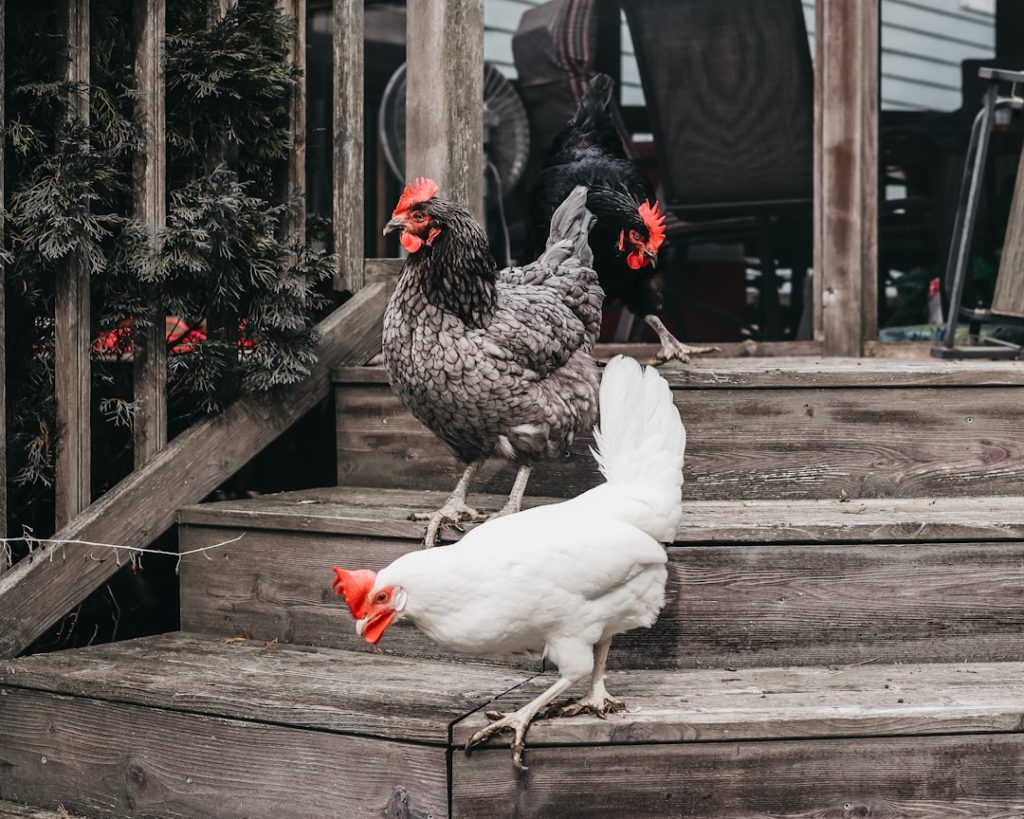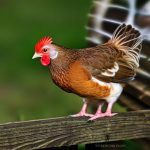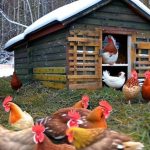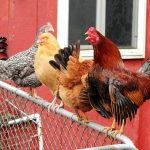Understanding local predators is essential for effective chicken flock protection. Predator species vary by region, and identifying potential threats is the first step in creating a secure environment for chickens. Common predators include foxes, raccoons, coyotes, hawks, owls, and domestic dogs.
Each predator presents unique challenges, making it crucial to understand their specific behaviors and habits when developing a comprehensive protection plan. Knowledge of predator hunting patterns and behaviors is equally important. For instance, raccoons are known for their dexterity and ability to manipulate latches and doors, while hawks and owls are skilled aerial hunters.
By understanding these characteristics, chicken owners can better anticipate and prevent potential attacks. Thorough research into local predators enables the development of targeted and effective protection strategies, ensuring the safety of the flock.
Table of Contents
Key Takeaways
- Identify the predators in your area to understand the specific threats to your coop and run
- Secure the coop and run with sturdy materials and locks to prevent easy access for predators
- Use predator-proof fencing such as hardware cloth to create a barrier against digging and climbing predators
- Implement deterrents like motion-activated lights or sound devices to scare off potential predators
- Provide secure overnight housing for your poultry to protect them from nocturnal predators
- Monitor and control food sources to avoid attracting predators to your property
- Consider utilizing guardian animals or deterrents like dogs or scarecrows to help protect your poultry from predators
Securing the coop and run
Inspecting for Weaknesses
Start by inspecting the coop and run for any gaps or weak spots that could be exploited by predators.
Reinforcing the Structure
Repair any damage and reinforce weak areas with hardware cloth or heavy-duty wire mesh to prevent predators from gaining access. In addition to securing the physical structure of the coop and run, it is important to consider the design and layout of the space.
Designing a Predator-Proof Space
For example, adding a secure door with a locking mechanism can prevent predators from entering the coop at night. Installing predator-proof windows and vents can also help to keep your chickens safe while still allowing for proper ventilation. By taking the time to secure the coop and run, you can create a safe and protected environment for your flock.
Using predator-proof fencing
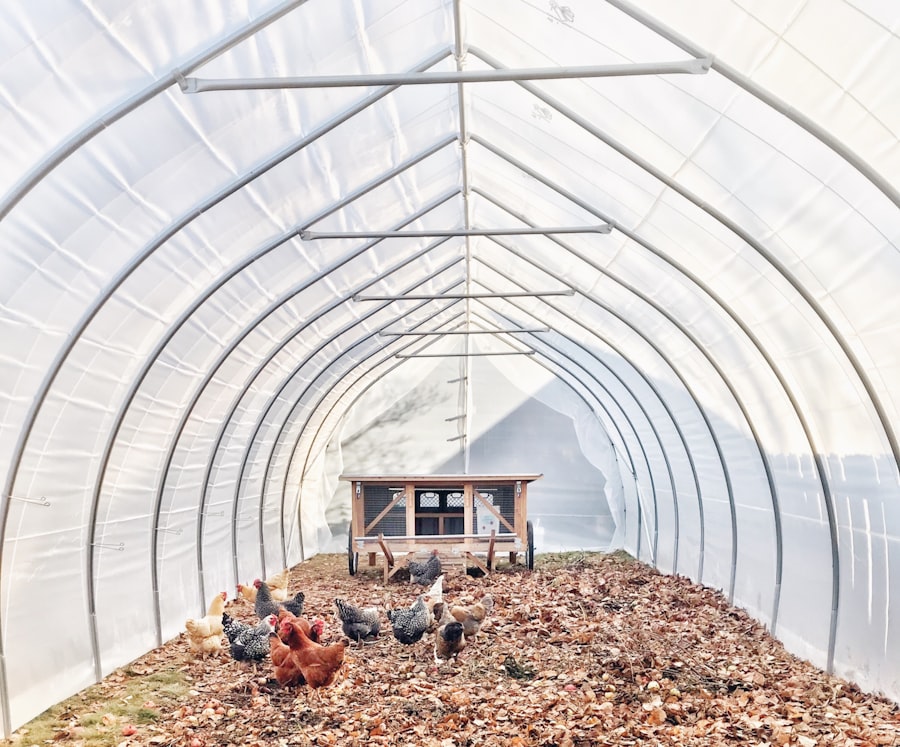
Predator-proof fencing is an essential component of protecting your chickens from predators. This type of fencing is designed to keep predators out while still allowing your chickens to roam freely. When selecting predator-proof fencing, it is important to choose a material that is strong and durable, such as welded wire or chain link.
Additionally, the fencing should be buried at least 12 inches into the ground to prevent predators from digging underneath. In addition to selecting the right type of fencing, it is important to consider the height of the fence. For example, if you are dealing with aerial predators such as hawks or owls, you may need to install a roof or netting over the top of the run to prevent attacks from above.
By investing in predator-proof fencing, you can create a secure outdoor space for your chickens to roam while keeping potential threats at bay.
Implementing predator deterrents
In addition to securing the physical structure of the coop and run, it is important to implement predator deterrents to further protect your flock. There are a variety of deterrents available, including motion-activated lights, sound devices, and even predator decoys. These deterrents work by creating a hostile environment for predators, making them less likely to approach your coop and run.
Another effective predator deterrent is the use of scent-based repellents. For example, predator urine or other natural scents can be used to create a barrier around the coop and run, deterring potential threats from approaching. By implementing a combination of physical barriers and deterrents, you can create a multi-layered defense system that will help keep your chickens safe from predators.
Providing secure overnight housing
Providing secure overnight housing is essential in protecting your chickens from nocturnal predators such as raccoons and foxes. This involves ensuring that the coop is securely locked at night and that all windows and vents are covered with predator-proof materials. Additionally, consider adding a predator apron around the perimeter of the coop to prevent digging from ground-based predators.
In addition to securing the coop itself, it is important to provide a safe roosting area for your chickens inside the coop. This can help protect them from potential attacks while they are sleeping. By providing secure overnight housing, you can give your chickens a safe and protected space to rest without fear of nocturnal predators.
Monitoring and controlling food sources
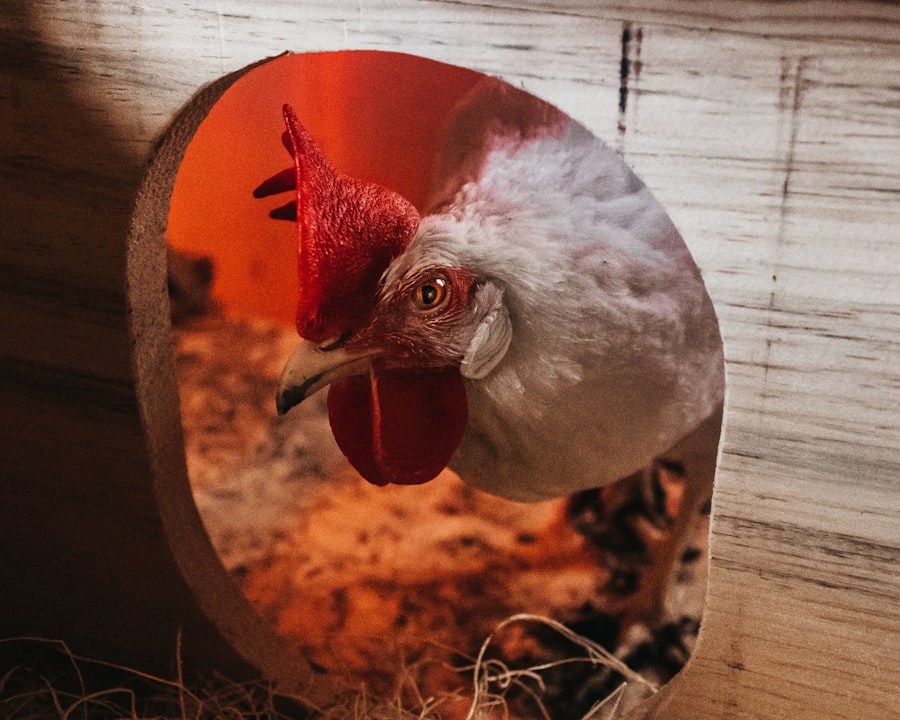
Secure Storage of Chicken Feed
Additionally, consider cleaning up any spilled feed or food scraps around the coop and run to prevent attracting unwanted attention from predators.
Other Potential Attractants for Predators
In addition to controlling food sources for your chickens, it is important to consider other potential attractants for predators. For example, keeping garbage cans securely closed and removing any potential hiding spots for rodents can help reduce the risk of attracting predators to your property.
Minimizing the Risk of Attracting Predators
By monitoring and controlling food sources, you can help minimize the risk of attracting predators to your chickens.
Utilizing guardian animals or deterrents
Utilizing guardian animals or deterrents can provide an additional layer of protection for your flock. For example, dogs are often used as guardian animals for chickens, as they can help deter potential threats and alert you to any potential danger. Additionally, consider using livestock guardian animals such as llamas or donkeys to help protect your chickens from ground-based predators.
In addition to guardian animals, consider using natural deterrents such as plants or landscaping features that can help deter potential predators. For example, planting thorny bushes or installing motion-activated sprinklers can create a hostile environment for predators, making them less likely to approach your property. By utilizing guardian animals or deterrents, you can create an additional layer of protection for your flock against potential threats.
In conclusion, protecting your chickens from predators requires a multi-faceted approach that includes understanding the predators in your area, securing the coop and run, using predator-proof fencing, implementing deterrents, providing secure overnight housing, monitoring and controlling food sources, and utilizing guardian animals or deterrents. By taking the time to develop a comprehensive predator protection plan, you can create a safe and secure environment for your flock to thrive.
If you’re looking for tips on how to keep your chickens safe from predators, you might also be interested in this article on creating a garden chicken coop. This article provides valuable information on how to design a coop that not only keeps your chickens safe, but also integrates seamlessly into your garden or backyard. It’s a great resource for anyone looking to provide a safe and secure environment for their flock.
FAQs
What are common predators of chickens?
Common predators of chickens include foxes, raccoons, coyotes, hawks, owls, snakes, and domestic dogs.
How can I protect my chickens from predators?
You can protect your chickens from predators by using secure fencing, locking them in a predator-proof coop at night, installing motion-activated lights or alarms, and using guard animals such as dogs or llamas.
What are some signs that my chickens are being targeted by predators?
Signs that your chickens are being targeted by predators include missing or injured chickens, feathers scattered around the coop or yard, and evidence of digging or attempts to break into the coop.
Are there any natural deterrents for predators?
Some natural deterrents for predators include planting thorny bushes or using strong-smelling herbs around the coop, as well as keeping the area around the coop clean and free of food scraps that may attract predators.
What should I do if I spot a predator near my chickens?
If you spot a predator near your chickens, you should make loud noises, use bright lights, or even physically chase the predator away to discourage it from returning. It’s important to ensure the safety of your chickens while doing so.
Meet Walter, the feathered-friend fanatic of Florida! Nestled in the sunshine state, Walter struts through life with his feathered companions, clucking his way to happiness. With a coop that’s fancier than a five-star hotel, he’s the Don Juan of the chicken world. When he’s not teaching his hens to do the cha-cha, you’ll find him in a heated debate with his prized rooster, Sir Clucks-a-Lot. Walter’s poultry passion is no yolk; he’s the sunny-side-up guy you never knew you needed in your flock of friends!

